Paving Cleaning Guide
Is your paving dirty, slippery or stained? All is not lost; with a little knowledge, the correct chemicals and a bit of effort, it is possible to rejuvenate even the most tired of patios. Our patio cleaning & care guide explains how to clean paving and methods for removing and improving the appearance of common types of staining.
Topics covered
- Cleaning paving; the basics
- Organic staining
- General weathering
- Efflorescence
- Brown staining
- Fertiliser staining
- Slate spots
- Jointing compound staining
Cleaning Paving; The Basics
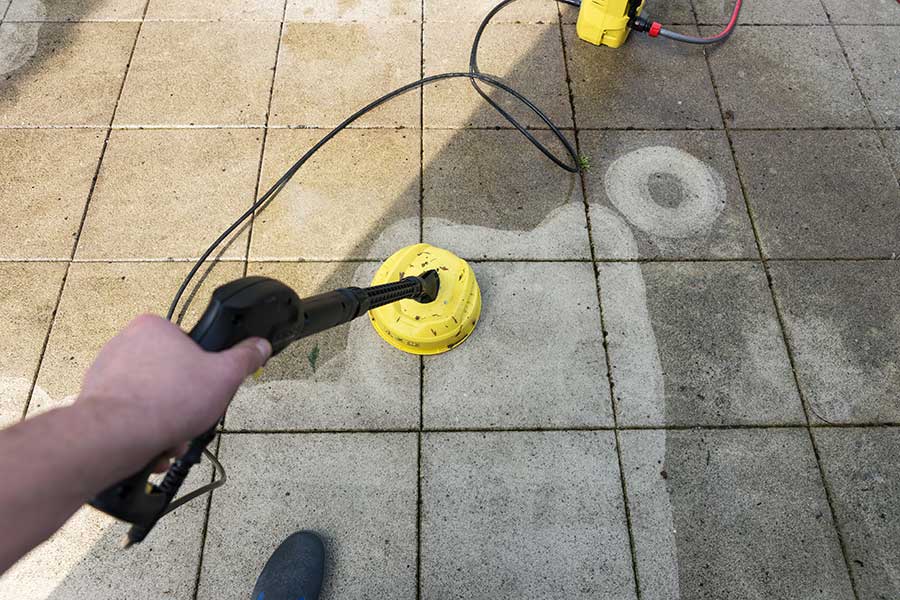
For natural stone and concrete paving, regular sweeping and the occasional hose down will keep it looking good and prevent moss and algae growth.
With time, even the best kept paving will need deep cleaning. Bird droppings, garden fertilisers, spills from food and drink, dirt, moss and algae can all stain and make paving slippery.
To deep clean your paving, first sweep it well to remove all loose debris. Use a stiff hand brush, not a wire brush as this will scratch the paving, to remove earth and moss deposits from pointing and edges. We do not recommend the use of powerful pressure washers for cleaning paving as it can damage pointing and cause shaling. Low pressure patio cleaning attachments should not damage paving but avoid high pressure jets.
Pavestone Patio Cleaner is safe for use on all types of natural stone and concrete paving. Dilute the cleaner into warm water (the mixture may be strengthened depending on the level of cleaning required and can be applied neat in extreme cases) and apply to the paving and agitate with a scrubbing or deck brush. Leave to soak for 5-10 minutes before agitating again before hosing thoroughly with clean water. Heavy soiling may require a second wash or isolated cleaning.
If spots, stains or blooming persist we have some more tricks up our sleeve to help rejuvenate your paving.
Organic Staining
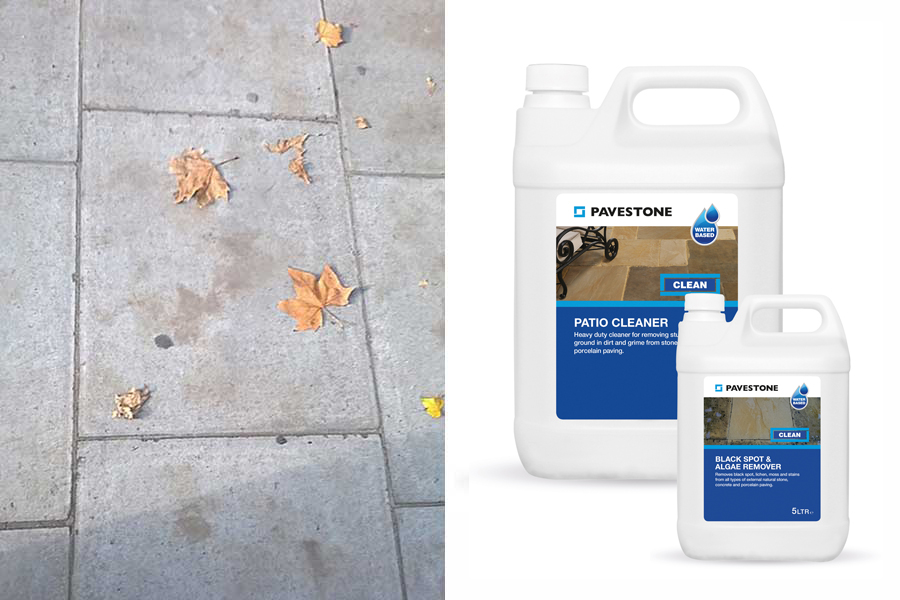
Organic material, such as leaves, berries and bird droppings, can stain paving as they break down and decay if they are not removed.
Solution
In most cases, organic staining is easy to remove. Give your paving a good sweep beforehand and remove all leaves and debris. Cleaning with Pavestone Patio Cleaner will remove most organic and garden staining. For more stubborn stains, Pavestone Black Spot & Algae Remover is formulated for deep cleaning and removal of dark marks. Both products are suitable for use with all types of paving including naturals, stone, concrete, and porcelain.
General Weathering
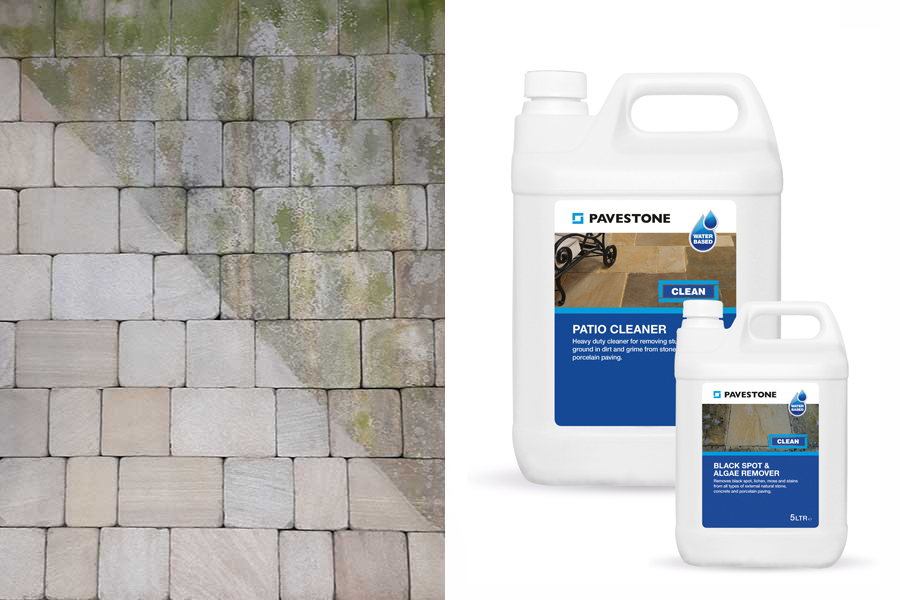
Over time, and without regular cleaning, paving can become stained and generally dirty. Shaded, damp or poorly drained areas of paving are also susceptible to algae, lichen and moss growth.
Solution
For general dirt and weathering, wash paving with Pavestone Patio Cleaner. For heavy staining, black marks or areas with algae growth Pavestone Black Spot & Algae Remover is a more aggressive solution designed to deep clean paving. Both products are suitable for use with all types of paving including natural stone, concrete, and porcelain.
Efflorescence
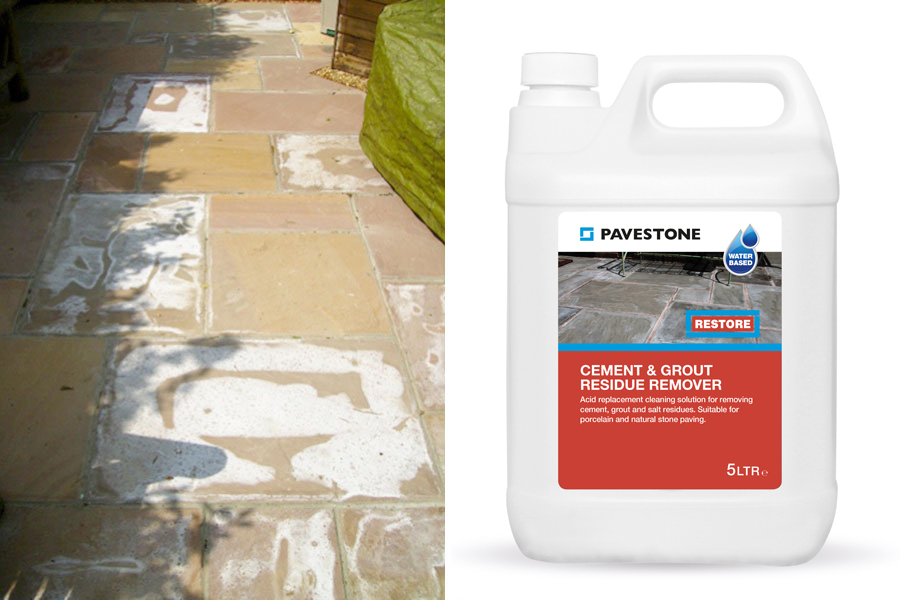
Efflorescence is caused by lime in the cement used to bed paving is absorbed and drawn to the surface. This is a natural phenomenon that can happen at any time and causes unsightly blooms and often occurs when paving has been laid incorrectly, on spots of mortar rather than a full bed.
Solution
Correctly installing paving on a full bed of mortar, preventing voids, will help to prevent most lime blooms but where the issue does occur the paving can be cleaned with Pavestone Cement & Grout Residue Remover. If left untreated efflorescence should gradually dissipate over time.
Brown Spots & Staining
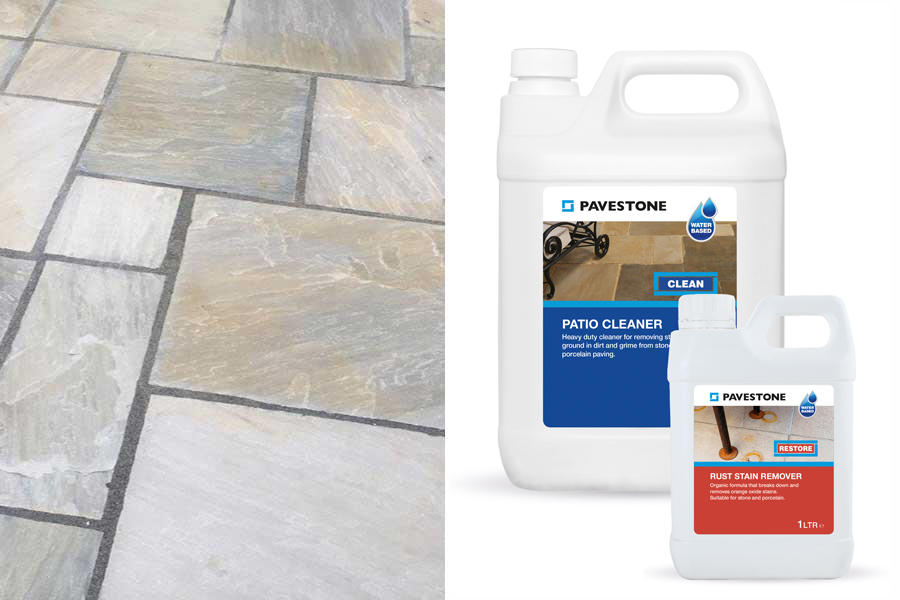
This can be an issue for natural stone and is caused by naturally occurring Iron Pyrites. The light brown spots or stains are blooms of rust from iron deposits rising through the paving as moisture is sucked up from the ground.
Solution
Begin by sweeping the paving and washing with Pavestone Patio Cleaner and allow to dry. When the brown spots and stains appear, clean the affected areas with Pavestone Rust Stain Remover, which will help to break down and remove the orange oxide stains and is suitable for use on natural and porcelain paving.
Fertiliser Staining
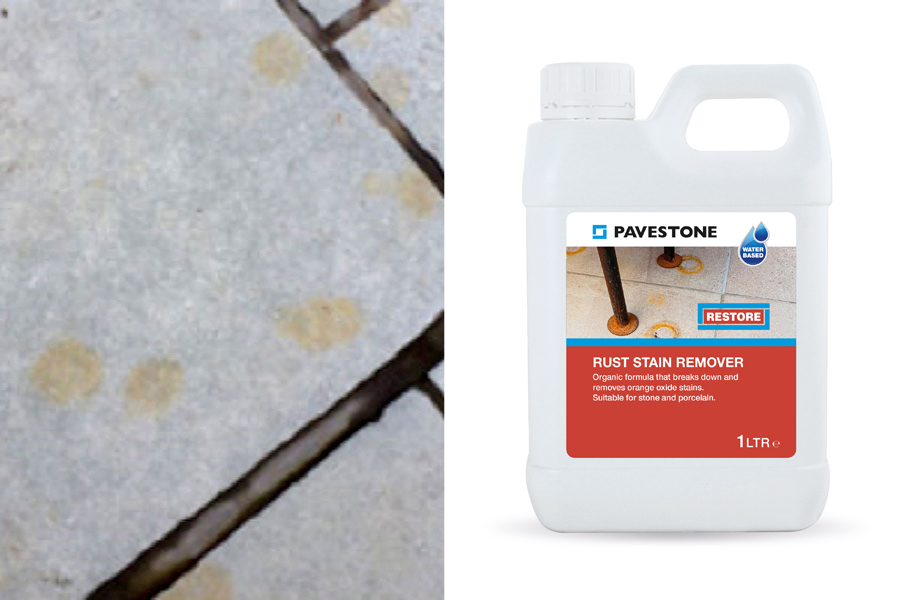
Ferrous sulphates contained in many common garden fertilisers can leave rust coloured spots and stains on paving. This is often seen where a patio meets a lawn or flower bed. Fertiliser manufacturers advise that paving should be covered before applying.
Solution
Affected areas of paving may be cleaned with Pavestone Rust Stain Remover.
Slate Spots
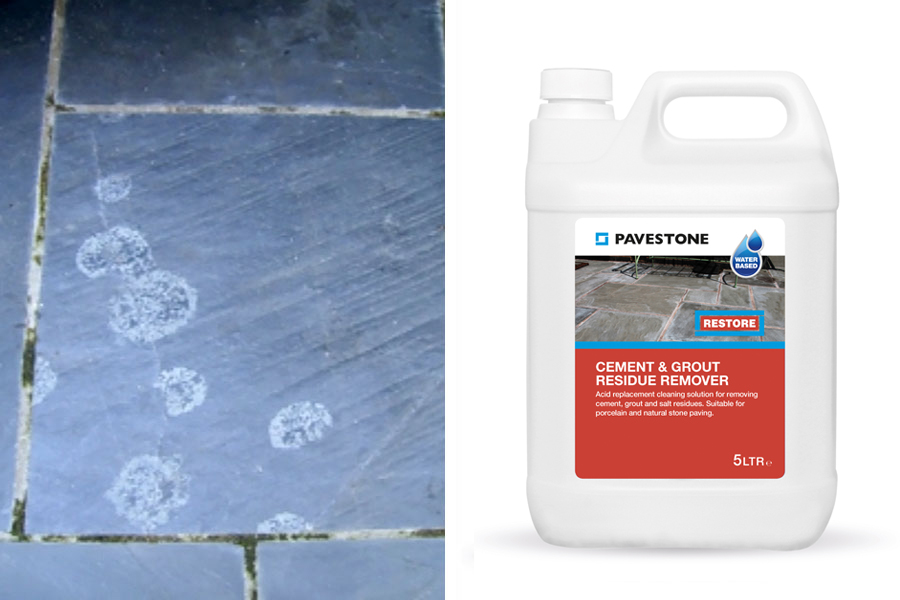
Slate contains calcites, deposits of this mineral at the surface of the stone can sometimes cause white spots or blooms with a flaky appearance to form on the surface of the paving.
Solution
Spots can be removed or reduced by rigorous cleaning of the affected areas with Pavestone Cement & Grout Residue Remover.
Jointing Compound Residue
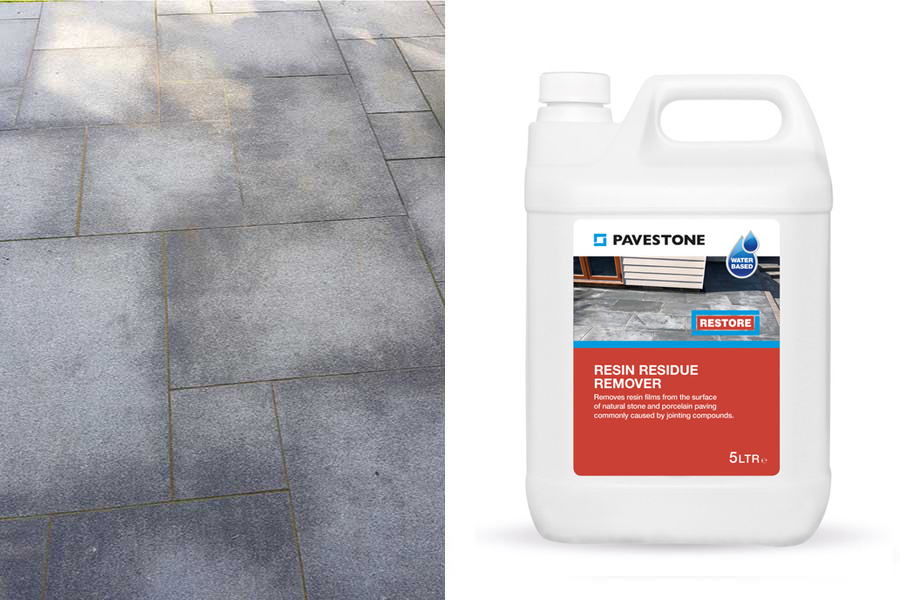
Jointing compounds can leave a residue of resin on paving that causes dark patches. The problem can be more noticeable on darker types of natural stone and is more likely to occur when paving is installed in hot weather.
Solution
Discolouration caused by resin residue will often disappear with time, but if the issue persists affected areas can be cleaned with Pavestone Resin Residue Remover.
Download a copy of the AWBS paving cleaning guide
Download a pdf copy of our comprehensive pation cleaning guide here


